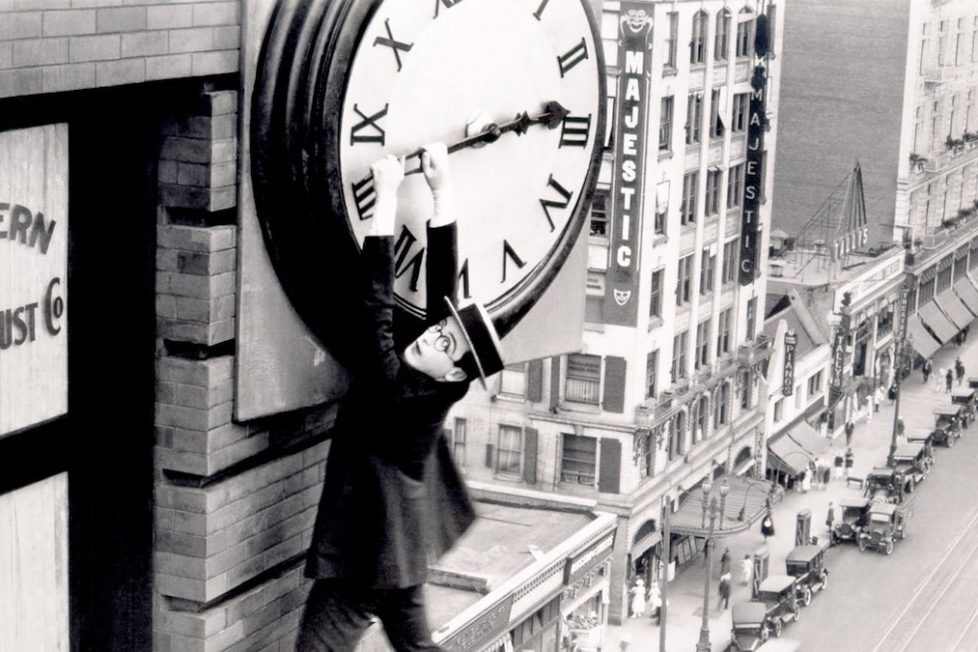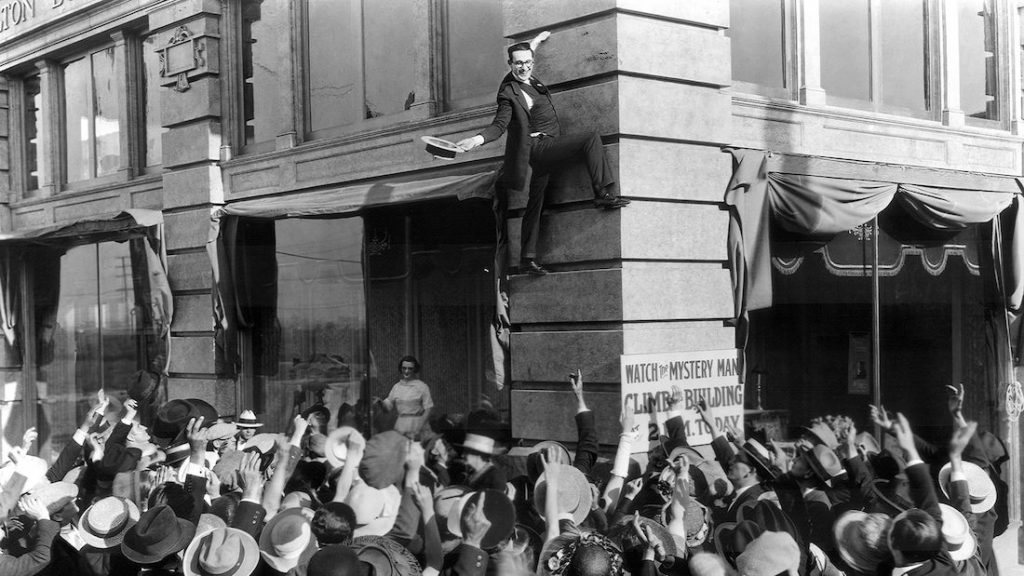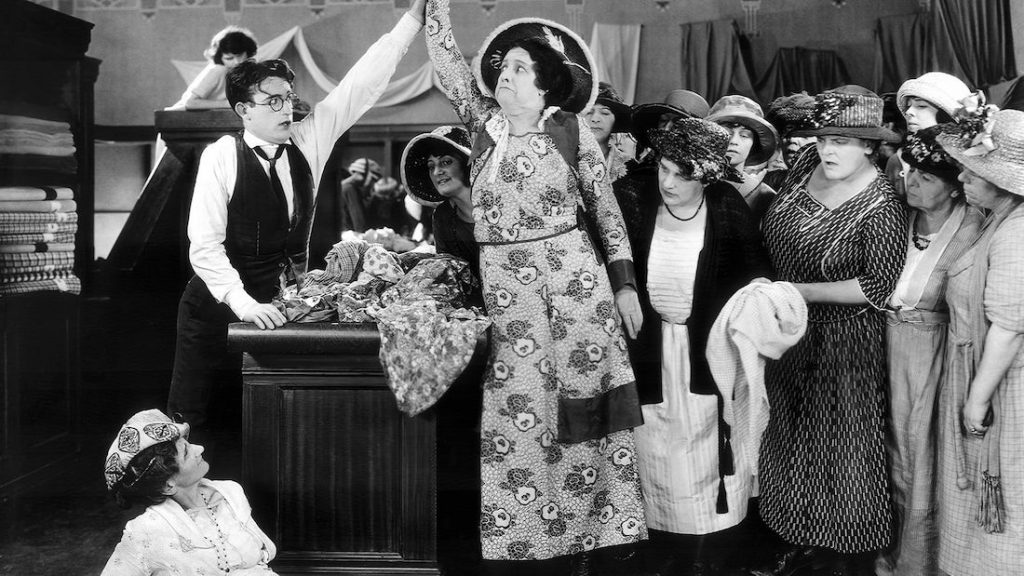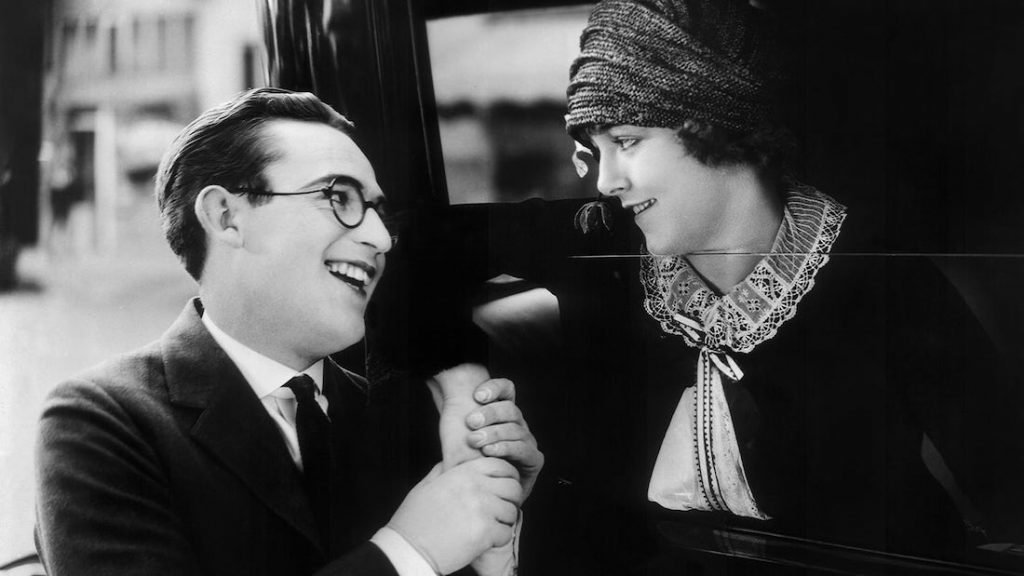SAFETY LAST! (1923)
When a store clerk organises a contest to climb the outside of a tall building, circumstances force him to make the perilous climb himself.

When a store clerk organises a contest to climb the outside of a tall building, circumstances force him to make the perilous climb himself.


Amongst the greatest pleasures of this Criterion Blu-ray is one never intended, and probably never imagined, by the filmmakers: the chance to see so much detail of downtown Los Angeles as it was nearly a century ago. Not just the buildings, but the crowds, the signs, and the shopfronts. But that’s only one of many attractions on an outstanding Criterion Collection release which does justice to a great comedian and his masterpiece.
Harold Lloyd is today slightly eclipsed by Charlie Chaplin and Buster Keaton in terms of popular renown, but in his time he was the most successful of the three. Safety Last! shows him to be a skilled filmmaker capable of constructing a complex, sophisticated piece of cinema that works at every level—from the hour-long narrative to three-second gags. (Although it was only his fourth feature, he’d already made around 180 shorter films, of which virtually all the pre-1917 releases are now lost. And although Fred C. Newmeyer and Sam Taylor received the directing credits for Safety Last!, there’s no doubt that Lloyd was the guiding genius.)

The climactic moment with Lloyd dangling from the arm of a giant clock, far above the street, is now one of the most famous images from all of silent cinema. But the whole of the sequence leading up to it, where Lloyd’s character (also called Harold Lloyd) has to climb the building in order to earn a thousand dollars, marry the girl, and impress his bosses at the De Vore Department Store, is a tour de force of physical comedy in which he milks every possible incident from the situation. He’s attacked by pigeons, menaced by a dog, tickled by a mouse, tormented by an out-of-reach rope, and so on and so forth…
Lloyd had previously executed similar passages in several of his movies (for example the building climb in 1919’s Ask Father; the ledge scene in 1920’s High and Dizzy; and the girder sequence in 1921’s Never Weaken), and everything he learned both about their scary-funny potential and the practicalities of filming them feeds into this classic episode.

And there are many, many smaller wonders in Safety Last! as well, ranging from clever misdirection (at the opening it seems he’s about to be led to the gallows, but the solemn priest turns out to be his father and the weeping women his mother and girlfriend, seeing him off at the railway station) to simple but inspired visual jokes (Lloyd using a man’s bald pate as a mirror when combing his hair).
There’s astute use of cinematic trickery, too, but it’s never gimmickry for its own sake. It always makes a point about the story, perhaps most notably when Lloyd has to hand over his last five dimes to buy jewellery for his girl. He’d originally wanted to spend the money on a slap-up meal, and as he passes each coin to the caricatured Jewish pawnbroker (Sam Lufkin in a memorable cameo) we see the courses of the imagined lunch disappearing, one by one.
Lloyd, 30-years-old at the time but looking younger, draws our attention in nearly every shot as the face behind those trademark round spectacles. He played a similar role across multiple movies—a somewhat foppish but also serious and ambitious young man, often only referred to as “the glasses character”. Some of the extra features on this disc alludes to how he effectively created a brand using only those glasses and his straw hat to summarise a character.

Still, there are others who command attention, too; most notably Mildred Davis as the love interest (off-screen as well as on, as she married Lloyd weeks before Safety Last!‘s release), and Westcott Clarke as Mr Stubbs, a marvellously haughty middle manager at the department store who, like all the best silent performers, convey so much with a single facial expression.
Also notable, for historical reasons if not particularly for his performance, is Bill Strother as a pal of Lloyd’s called Strother, nicknamed “The Human Spider”, who was an actual climber of tall buildings. It was one of his real-life stunts that prompted Lloyd to make such an ascent the biggest set-piece of Safety Last!
Strother also doubled for Lloyd in long shots where it was necessary to show the climber against a whole building. In closer shots, it’s Lloyd himself doing the climbing, despite an accident a few years earlier where he lost a thumb and finger. For these shots, platforms and building facades were used, so he may not have been quite as high as the movie implies… but he was still genuinely making his way up a wall with little in the way of safety measures.
USA | 1923 | 74 MINUTES | 1.33:1 | BLACK & WHITE | SILENT / ENGLISH

Safety Last! was one of five movies that Lloyd dubbed his “thrill pictures”, and though the frissons he was referring to were induced by his character’s hair-raising escapades, this Criterion package will be a thrill for any film aficionado. For those who just want the film, they won’t get a crisper version with a better soundtrack; the quality of both the visual and aural reproduction is so high that one really gets the sense of watching a new movie in 1923, rather than an antique. And for those who want a fuller picture of Lloyd, his films, and his world… it’s hard to imagine a better-chosen, or more generous, set of extras.

director: Harold Lloyd.
writers: H.M Walker (titles), Jean Havez (uncredited) & Harold Lloyd (uncredited) (story by Hal Roach, Sam Taylor & Tim Whelan).
starring Harold Lloyd, Mildred Davis, Bill Strother, Noah Young & Westcott Clarke.
